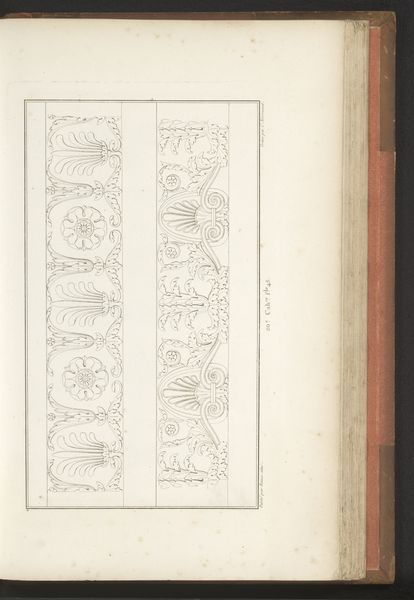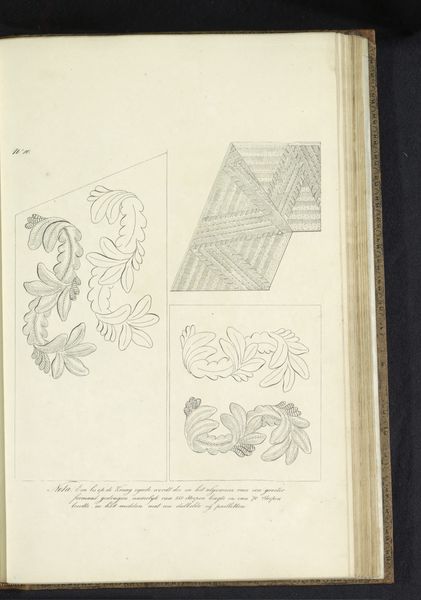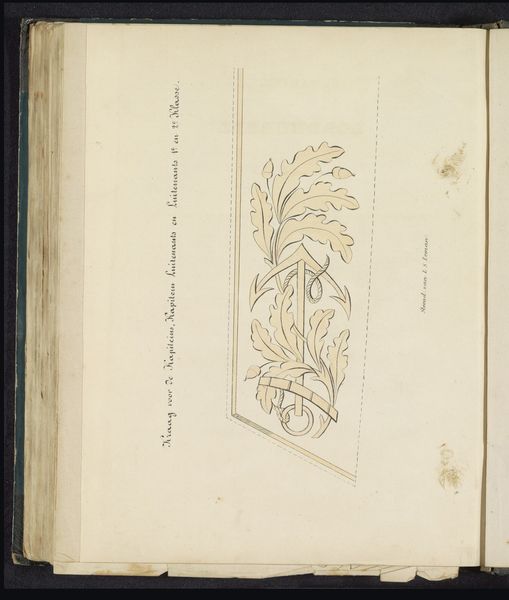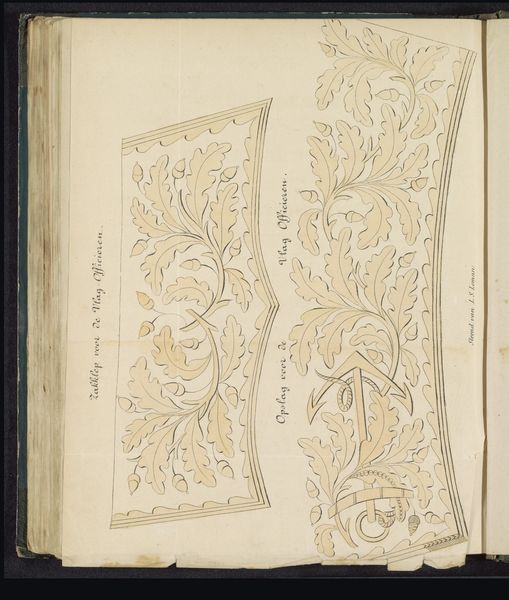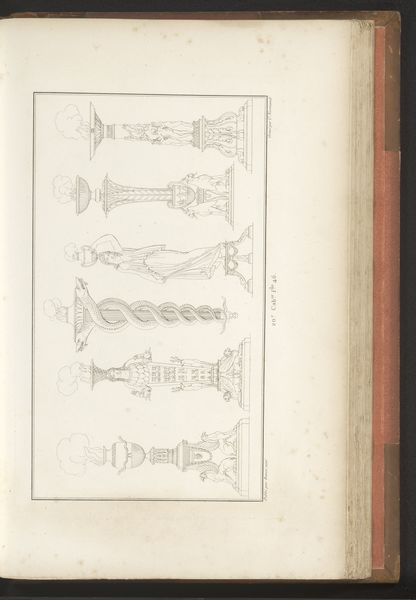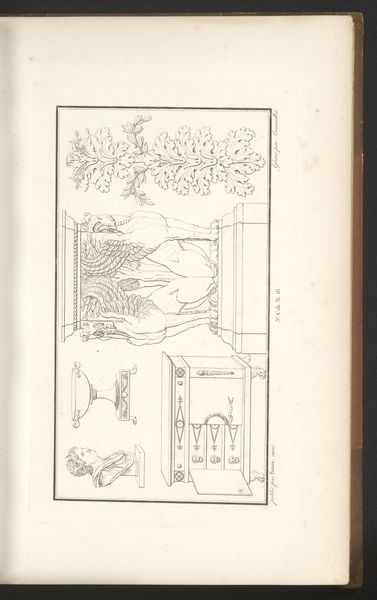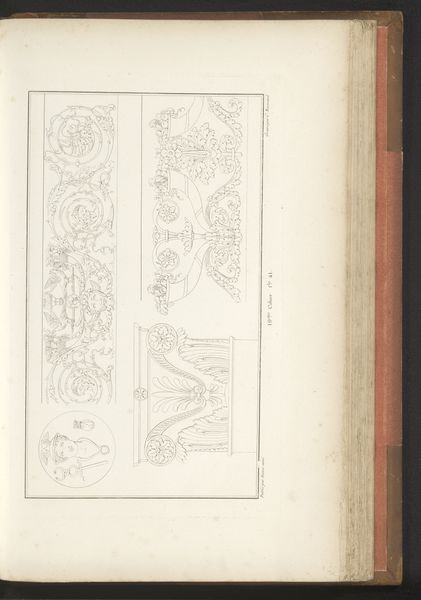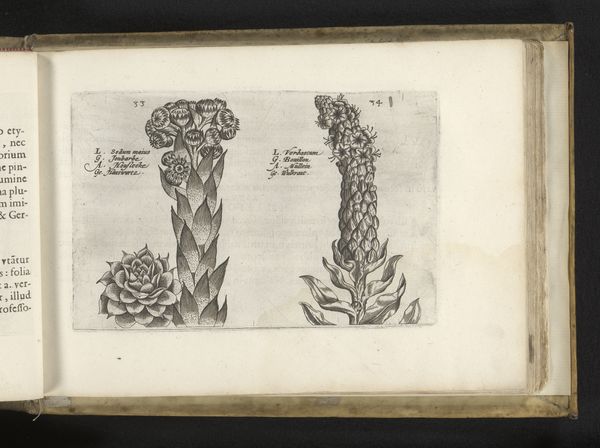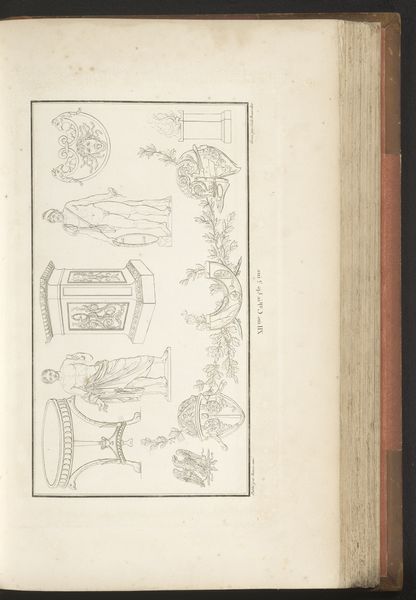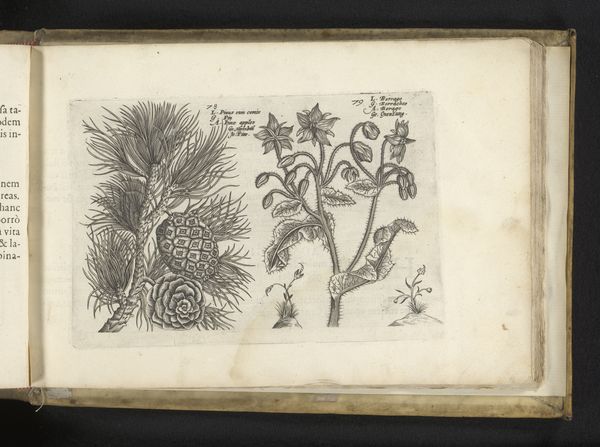
Borduursel op het uniform van apothekers van de Geneeskundige Dienst, 1845 1845
0:00
0:00
drawing, print, paper, ink
#
drawing
#
pen drawing
# print
#
pen illustration
#
pen sketch
#
paper
#
personal sketchbook
#
ink
#
pen-ink sketch
#
pen work
#
sketchbook drawing
#
academic-art
#
decorative-art
#
sketchbook art
#
coloring book page
#
doodle art
#
realism
Dimensions: height 270 mm, width 200 mm
Copyright: Rijks Museum: Open Domain
Curator: The flowing lines and almost spectral quality immediately strikes me in this page from a sketchbook dating to 1845, now held at the Rijksmuseum. We see multiple ink drawings depicting embroidery designs for the uniform of apothecaries from the Medical Service. Editor: My initial impression is a kind of rigid elegance—almost as if a heraldic design were softened and given life through organic forms. Tell me, what does the inclusion of these specific emblems signal about the identity and status of these apothecaries? Curator: Absolutely. Looking through a lens informed by social history, we must recognize that uniforms—and their ornamentation—were deeply symbolic, especially in the 19th century. These intricate botanical motifs aren't merely decorative; they visually codified the apothecary's role and their relative standing within a hierarchical medical system. Editor: Focusing on the formal qualities, the repetition of these stylized leaves creates a sense of visual rhythm, and even a delicate sort of symmetry, especially when we observe their variations in placement for, perhaps, different garments, ranks, or uses. How do these visual motifs work together? Curator: Think of the leaf motifs, possibly acanthus, not just as pleasing designs, but as powerful signifiers linked to healing and medicine from classical times. The embroidered embellishments elevated what might have been considered a simple, functional garment into a display of professional authority and specialized knowledge—underscoring ideas related to science and civic responsibility. Editor: And considering its location in a sketchbook, the freedom in execution suggests this might have been more of an exercise in refining the ultimate emblem of identity through compositional iteration. The uniform is itself the canvas. It seems as though the image’s power lies within these very tangible societal concepts it attempts to visually interpret and impose. Curator: Precisely. It’s in this interplay between the objective rendering of uniform design and its resonance within historical structures of power and knowledge that we understand the work's broader significance. It reflects how social hierarchies manifest materially. Editor: The conversation truly shifted as we gave attention to the symbolism behind it. It's incredible how what might initially seem like purely aesthetic patterns are really imbued with so much societal meaning and even speaks to power.
Comments
No comments
Be the first to comment and join the conversation on the ultimate creative platform.
